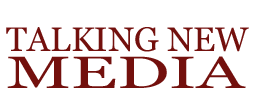 D.B. Hebbard says digital magazine publishers shouldn’t abandon replicas yet
D.B. Hebbard says digital magazine publishers shouldn’t abandon replicas yet
Recent articles spelling doom for replica editions could be misleading to digital magazine publishers, writes D.B. Hebbard in a recent Talking New Media post. For his part, Hebbard says replicas are on the rise, and he believes industry observers closing the door on them are doing so too soon.
“Nothing could be further from the truth. In fact, of the last 100 or so new digital editions to be released into the Apple Newsstand, the vast majority have been either replica editions (70+ percent), or else PDF-based digital-only start-ups (half the remaining). The native digital edition remains the choice of only a small minority of digital publishers,” Hebbard says.
Although we encourage publishers to invest more into their digital magazines, a replica, at the very least, is a good start. Hebbard focuses on several factors that digital magazine publishers must take note of when considering replica editions. Let’s take a look at the some of the drivers keeping them relevant, according to his article:
Sensibility
Sometimes, Hebbard says, replicas just make the most sense for digital magazine publishers, and we couldn’t agree more! At Mequoda, our belief is that it depends on your financial situation, how well-established you are, what your audience is looking for, and other criteria.
As long as the fonts are readable and the delivery mechanism is reliable, you should be in good shape. However, scrolling text is a must, and the #1 feature requested by readers; a feature that many replica editions omit. We recommend the small-publisher-friendly Mag+ as a provider, and we strongly recommend spending a little extra time and money on your replica – enough to upgrade it to a reflow.
[text_ad]
Hebbard also mentions how replicas are friendly for searchable archives, and that inserts and special ad sections can be converted easily.
Reach
Hebbard revisits one of his favorite targets here, the Apple Newsstand, to say that digital magazine publishers are tiring of the service’s troubles. As they migrate to alternative newsstands, they’re finding that some require replicas for inclusion.
With replicas relatively cheap to produce, the frustrations of Apple Newsstand, and the increased visibility, publishers are saying even small sales numbers justify the move.
Revenue-Sharing Platforms
Hebbard writes that replicas fit into the revenue-sharing platform model that’s emerging on newsstands. Vendors have launched replicas for as many as 500 digital magazine publishers that are reluctant to take on the project themselves.
But are they right for you? Check out our post on replicas to find out!
Regardless, it’s always good to have more options.
“What drives these stories about the replica’s demise is mostly anecdotal evidence provided by publishers who, having first launched replica editions, have now launched new native digital editions. Some are reporting better downloads and digital subscription sales, though most simply say that reader satisfaction has increased,” Hebbard writes.
“This makes sense, designing a publication for the device or publishing platform it will be read on, is exactly what art directors see as natural. But one publisher, when explaining to me why they are producing replica editions, said readers see no difference between replicas and native editions.”
Do you agree with this statement? What are your thoughts on digital replicas? Let us know in the comments!
To read more about digital magazine publishers and replica editions, visit Talking New Media.


